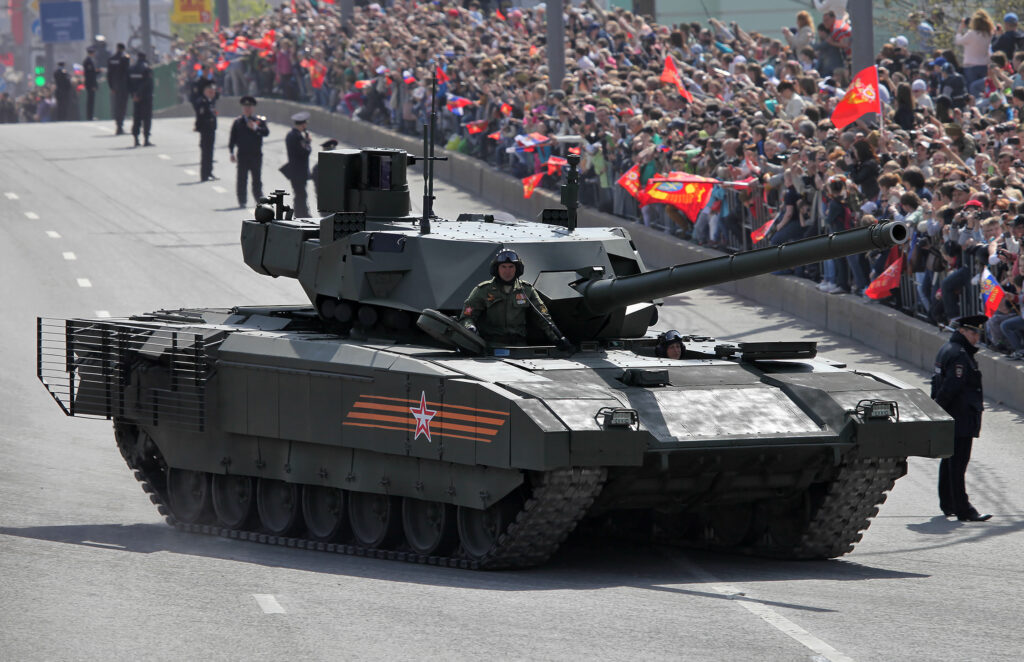
Russia’s new T-14 Armata tank on parade in Moscow.
NATIONAL PRESS CLUB: The tank is far from obsolete and the US will need a new armored vehicle to replace its 1980-vintage M1 Abrams, the Army Chief of Staff said here this afternoon. But what kind of tank, on what kind of timeline? Gen. Mark Milley made clear he was looking for a “breakthrough,” not incremental evolution – which probably means that the new tank will take a long time.
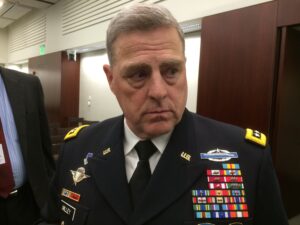
Gen. Mark Milley
“Are we sort of at that point in history where perhaps mechanized vehicles are going the way of horse cavalry and going the way of the dinosaur?” Milley asked. “I don’t think so — but I’m skeptical enough to continue to ask that.”
“We have a good, solid tank today,” Milley said of the M1. “Having said that, we do need a new ground armored platform for our mechanized infantry and our tanks, because it’s my belief that, at least in the foreseeable future — and you can follow that out to 25 years or so — there is a role for those type of formations.”
“What are some of the technologies?” Milley said. “There’s Active Protection Systems” – electronic jammers and mini-missiles to stop incoming anti-tank weapons – “(and) there’s reduced crews with automated turrets” – as found on Russia’s new T-14 Armata, which Milley said the Army is studying closely – “but the real sort of holy grail of technologies that I’m trying to find on this thing is material, is the armor itself…. If we can discover a material that is significantly lighter in weight that gives you the same armor protection, that would be a real significant breakthrough.
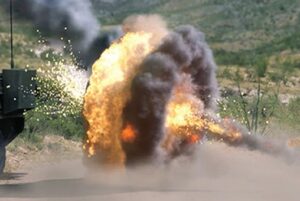
Raytheon Quick Kill Active Protection System
“There’s a lot of research and development going into it,” Milley said. That’s true, but in all my conversations with Army and industry experts in recent years, no one believes we’re close to a “breakthrough.” Modest improvements in armor materials are in the works, but nothing that would change the fundamental calculus that makes protection heavy.
The trend, in fact, has been for everything to get heavier. The M1 tank started out in 1980 weighing about 60 tons, enough to stop most Soviet anti-tank shells and missiles of the day, but has grown to almost 70. The M2 Bradley, a heavily armed troop carrier called an Infantry Fighting Vehicle, grew from a fairly fragile 25 tons to a robust 40, with contractor BAE now proposing a 45-ton model. Some designs for a Bradley replacement, the proposed Ground Combat Vehicle, grew as heavy as 84 tons before the cash-strapped Army cancelled the program.
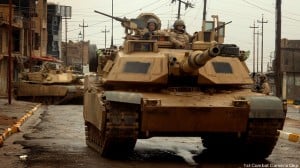
M1 Abrams tanks in Iraq
While the Army is now looking at lighter vehicles, the experts I’ve talked to are not counting on lighter armor. Instead, they’re contemplating trade-offs once deemed heretical, like building an air-droppable light tank to support paratroops, or having the Bradley replacement only carry half an infantry squad.
Such smaller vehicles would be lighter, as well as more maneuverable on narrow city streets – a key consideration because many Army leaders, including Milley, expect future warfare to be fought increasingly in urban settings. Mosul is a brutal but ultimately small-scale “preview” of future city fights in sprawling megacities, Milley said today. In Mosul – as in Fallujah in 2004 and Sadr City in 2008 – it took tanks to retake the city, working closely with regular infantry and special forces, he noted.
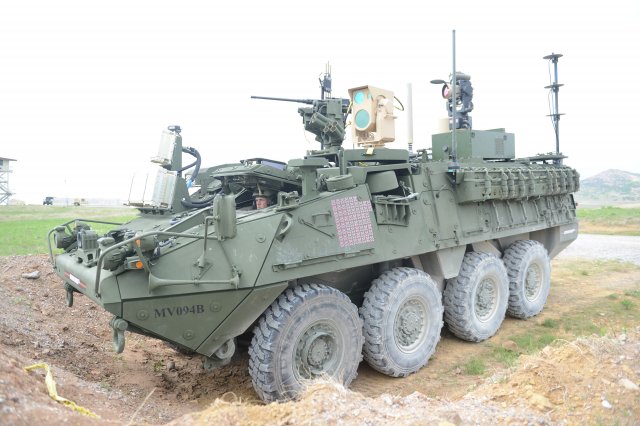
Army laser-armed Stryker at Fort Sill. This 5-kilowatt weapon is intended to shoot down drones, but more powerful lasers could disable vehicles.
Lasers, Railguns & Robotics
While Milley put lighter-weight protection as priority number one, he also highlighted two other technologies that could revolutionize armored vehicle design. One is electrically-powered weapons, such as railguns – which use electromagnets to accelerate a solid metal slug to supersonic speeds – and lasers – which fire pure energy at the speed of light. “We’ve been using kinetic or powder-based munitions for five centuries,” Milley noted, but there are now major advances in alternative forms of firepower.

A target truck disabled by Lockheed’s ATHENA laser
So far, lasers and railguns are being developed primarily as defensive weapons, able to shoot down drones or cruise missiles more quickly and cheaply than surface-to-air missiles. However, Air Force Special Operations Command plans to put a 150-kilowatt laser on its AC-130 gunships to disable enemy vehicles by silently burning through key components. It’s not too far from an offensive laser that can fit in a big airplane to one that can fit in a big ground vehicle.
The other potential breakthrough Milley mentioned was the “revolution in robotics.” The land is harder to navigate than empty sky or open sea, he emphasized, so ground robots will lag drones or unmanned ships, “but eventually we will see the introduction of wide-scale robotics.” Many of those will be small and relatively expendable scouts, designed to carry sensors or weapons ahead of the human force. Milley also wants his future tank to have enough automation not just to reduce the human crew required, but to optionally leave out the humans altogether, depending on the mission.
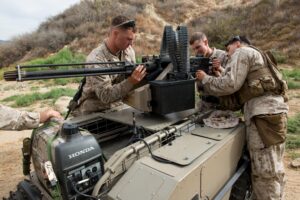
Marines work on armed MUTT robot in MIX-16 experiment.
“Every vehicle that we develop, we probably need sure it’s dual use, so the commander on the battlefield at the time has the option of having that vehicle manned or unmanned,” Milley said. “They can flip a switch and have it be a robot.”
Building these future warbots will take a lot of thought. If you make an artificial intelligence smart enough to operate the tank some of the time, can you et the AI drive all the time and leave the human crew safe at home, where they can’t get killed or screw things up? If the humans aren’t inside the tank, do you let the AI pick targets and make the decision to kill them on its own? Pentagon policy says “never,” but if our robots have to wait for a human to say (or just think) “fire,” less scrupulous adversaries will be quicker on the draw. It’s a hornet’s nest of difficult questions that the Army – and the nation – will have to answer.
Senate passes $95 billion foreign aid bill, as DoD eyes next Ukraine weapons package
Additional aid for Ukraine could be made available “within days” said Pentagon Press Secretary Maj. Gen. Pat Ryder earlier today.


























